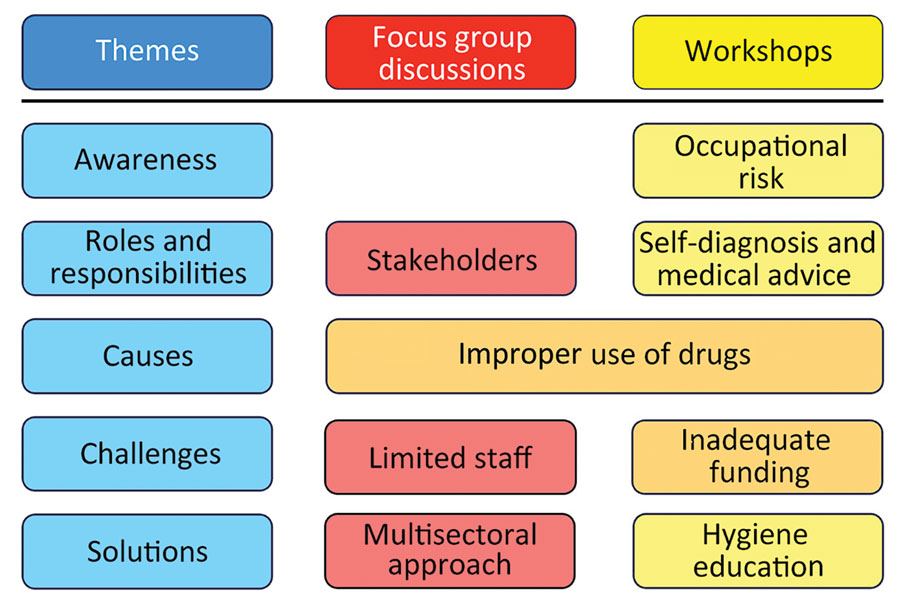Volume 29, Number 10—October 2023
Dispatch
Antimicrobial Resistance in Slaughterhouses, Kenya
Figure 1

Figure 1. Themes identified from focus groups and in workshops in study of antimicrobial resistance in slaughterhouses, Kenya. Focus group discussions included county veterinary officers, subcounty veterinary officers, and meat inspectors; workshops included slaughterhouse workers. Blue indicates overall themes; red indicates results from focus group participants; yellow indicates results from workshop participants; orange indicates answers shared by both groups of participants.
1Current affiliation: Transdisciplinary Consultants Ltd., Nairobi, Kenya.
Page created: August 21, 2023
Page updated: September 20, 2023
Page reviewed: September 20, 2023
The conclusions, findings, and opinions expressed by authors contributing to this journal do not necessarily reflect the official position of the U.S. Department of Health and Human Services, the Public Health Service, the Centers for Disease Control and Prevention, or the authors' affiliated institutions. Use of trade names is for identification only and does not imply endorsement by any of the groups named above.